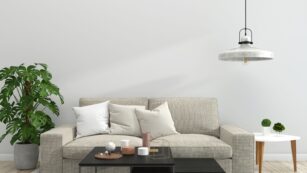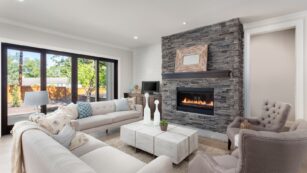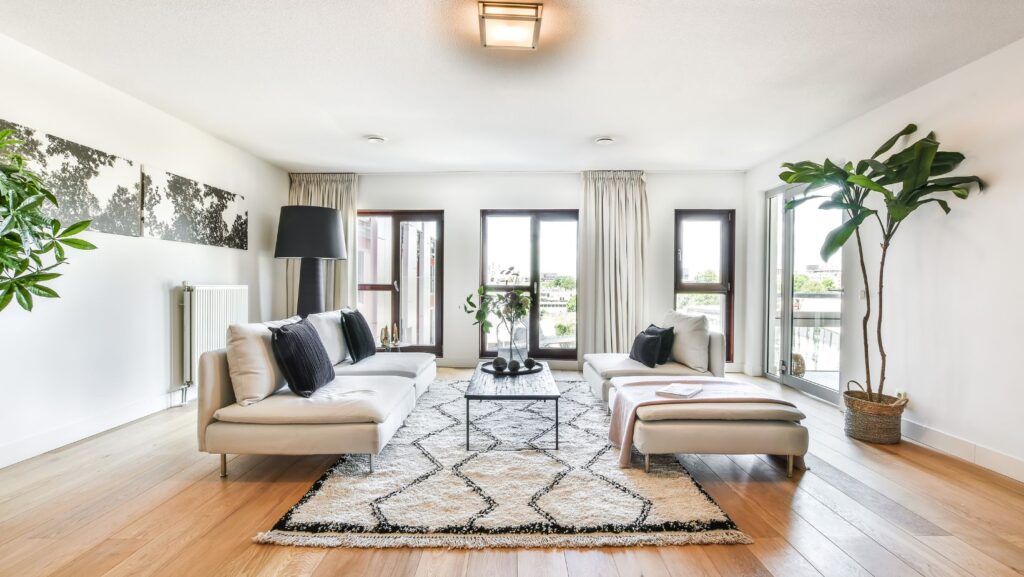Creating a balanced living room is more than just arranging furniture; it’s about crafting a harmonious space where style meets functionality. A well-balanced living room invites comfort and aesthetic appeal, making it the heart of any home. Whether it’s through the strategic placement of furniture or the thoughtful selection of colors and textures, balance transforms a chaotic space into a serene retreat.
Balanced Living Room
A balanced living room combines comfort, style, and functionality. It’s achieved by careful consideration of design principles and personal preferences.
The Importance of Balance in Interior Design
 Balance provides both aesthetic appeal and practicality in interior spaces. Symmetry ensures a pleasing appearance, while proportion prevents overcrowding. Designers often use rhythm in layout and decor to create a flow that enhances movement within the room.
Balance provides both aesthetic appeal and practicality in interior spaces. Symmetry ensures a pleasing appearance, while proportion prevents overcrowding. Designers often use rhythm in layout and decor to create a flow that enhances movement within the room.
-
Symmetry: Arranging furniture and decor in a mirror-image fashion brings harmony. For example, placing sofas opposite each other around a central table.
-
Proportion: Choosing furniture that matches the room’s size is crucial. Large pieces in small spaces disrupt balance, just as small items do in expansive areas.
-
Rhythm: Repeating design elements, such as color or texture, adds unity. This can be seen in a color scheme carried through pillows, rugs, and wall art.
-
Personal Touches: Adding personal elements, like family photos or unique artworks, can reflect personal taste without upsetting balance if integrated thoughtfully.
Lighting for a Balanced Atmosphere
 Lighting plays a crucial role in achieving a balanced atmosphere in a living room by enhancing both functionality and aesthetics. Different lighting types cater to various needs and contribute to an inviting space. Ambient lighting provides overall illumination using overhead fixtures like chandeliers or recessed lights. It establishes the room’s primary light source without overshadowing other elements.
Lighting plays a crucial role in achieving a balanced atmosphere in a living room by enhancing both functionality and aesthetics. Different lighting types cater to various needs and contribute to an inviting space. Ambient lighting provides overall illumination using overhead fixtures like chandeliers or recessed lights. It establishes the room’s primary light source without overshadowing other elements.
Task lighting focuses on specific areas, facilitating activities such as reading or working. Table lamps, floor lamps, and wall-mounted lights near seating areas deliver focused illumination for these purposes. Accent lighting adds depth and highlights key features, such as artwork or architectural elements. Using directional lights like spotlights or track lighting, it creates focal points and draws attention to desired areas.
Layering these lighting types ensures a well-rounded and adaptable environment. Dimmers adjust brightness to match various needs and create a cozy atmosphere. Combining different lighting styles unfolds a versatile space, adaptable to varying occasions and preferences, thus maintaining the harmony essential to a balanced living room.
Accessories and Decorations
 Accessories and decorations enhance a living room’s ambiance by adding personality and style, contributing to the space’s balance. Selecting items like vases, sculptures, or decorative bowls that complement existing decor ensures cohesion. Layering textures with elements such as throw blankets, cushions, or plush rugs introduces warmth and depth, increasing visual comfort.
Accessories and decorations enhance a living room’s ambiance by adding personality and style, contributing to the space’s balance. Selecting items like vases, sculptures, or decorative bowls that complement existing decor ensures cohesion. Layering textures with elements such as throw blankets, cushions, or plush rugs introduces warmth and depth, increasing visual comfort.
Wall art is pivotal in highlighting personal tastes and enhancing room dynamics. Opt for pieces that resonate with the room’s theme, choosing variations in size and frame styles to keep the walls engaging. Mirrors function as decorative objects and light amplifiers, creating the illusion of more space. Position them strategically to reflect light sources and increase brightness.
Plants and greenery introduce a natural element, softening interior details. Choose low-maintenance plants like succulents or ferns in stylish pots to add freshness without overwhelming the scene. Group decorative items in odd numbers and vary heights to maintain visual interest while avoiding clutter.
When accessorizing shelves, blend book arrangements with decorative objects to strike a balance. Use small-scale art, mini sculptures, or personal memorabilia to create depth. Consider symmetry and proportion, especially when large items, like vases or lamps, flank mantelpieces or console tables.
Balance in accessories and decorations is achieved through thoughtful selection and placement, ensuring each piece unifies with the room’s overall aesthetic while serving a functional or sentimental purpose.

